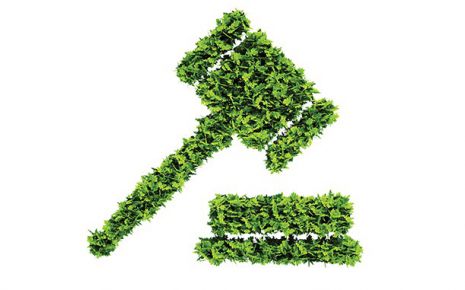Exploring The Rise Of Judicial Sovereignty In Modern Governance
"The Rise of Judicial Sovereignty" by Pratap Bhanu Mehta is an insightful
essay that explores the role of the judiciary in modern democracies. The essay
argues that the judiciary has become increasingly powerful in recent times and
has taken on a larger role in shaping public policy.
Mehta begins by pointing out that the traditional role of the judiciary was to interpret and apply the law, rather than create it. However, he notes that in recent years, the judiciary has increasingly taken on a more active role in shaping public policy. Mehta argues that this trend towards judicial activism can be seen in many countries, including the United States, India, and South Africa.
The paper's overarching theme is the competition of powers between India's three wings of democratic government. There appears to be both a passive and active argument about how the judiciary, through its actions, has become a powerful, non-elected, unaccountable body that plays a role in almost every area, from civil liberties to urban planning. The author's series of arguments appear to be seamless and convincing as to how the judiciary wing has been able to exercise its independent power.
One of the key factors driving this trend, according to Mehta, is the decline of political institutions. He argues that as political institutions have become less effective and less responsive to the needs of citizens, the judiciary has stepped in to fill the void. Mehta suggests that this has led to a situation where the judiciary has become the de facto arbiter of public policy.
Mehta goes on to explore some of the implications of this trend towards judicial sovereignty. He notes that while the judiciary can play an important role in protecting individual rights and promoting social justice, there are also risks associated with judicial activism. For example, he suggests that judicial activism can sometimes undermine democratic accountability, as judges are not directly accountable to the electorate.
While discussing the controversial sovereignty of the courts Mehta makes two arguments that sort of contradict each other. He begins by stating that the judiciary is an independent body tasked with protecting the basic structure of the constitution and has the authority to reject amendments proposed by parliament. On the other hand the account of suspension of the fundamental rights of the people and power abuse by the government by bending the judicial voice for personal motives.
In my opinion, the judiciary is an independent body tasked with protecting and enforcing the constitution through a network of courts. This is to disregard both legislative and executive functions. It has been able to further deepen the independence of appointment in judicial systems and to have its autonomy over the state through collegium systems. However, I believe that the judiciary, through the use of PIL, has been able to bring to light a large number of cases that violate civil liberties. This has two implications: the courts have brought autonomy to its doorstep, and they have broadened the scope of decentralised governance, which has been blocked and corrupted in various ways by governments.
Analysis
There appears to be a problem with politically independent decision making, as well as its accountability and rationale. There is an issue that is clearly highlighted, which is the changing role of the judiciary and exercising more and more independent power, which makes it opaque and less empirical in similar situations. "Judicialization of politics and politicisation of the judiciary" comprehensively explains the current role of the judiciary. It identifies how the judiciary is seizing control of democratic institutions and processes, as well as how the judiciary, as an unelected independent body, has entered mainstream politics to wield power. The principles that guide the Supreme Court's decisions have become less clear as it has
become known as a forum for resolving public-policy issues. To the extent that the rule of law entails providing a forum for appeals, the Court could be said to have done well. Insofar as articulating a coherent public philosophy that yields predictable results is required for the rule of law, the Court's interventions appear less impressive. The Court has accumulated so much power by usurping executive functions and marginalising the representative process without explaining where it derives its own authority.
Theoretically, democracy and constitutionalism can be mutually reinforcing, but in practise, the relationship is complex and even problematic. The question of where one begins and the other ends has taken on global significance in light of the widely observed trend towards "post-democracy," in which representative institutions are ceding power to non-elected decision-making centres around the world. In India, unelected judges have effectively supplanted the concept of three branches of government with a "unitarian" claim of formal judicial supremacy. The concept of the rule of law is supposed to legitimise this claim, but whether judicial supremacy, as defined by the Indian Supreme Court, actually upholds the rule of law is debatable.
The preservation of rights and liberties through decision making appears to have been misunderstood in some ways in the system's power dynamics. It is difficult to comment on the quality of amendments rejected by the judiciary without knowing the facts of many of the cases discussed in the paper. However, it is also unsatisfactory to claim that the judiciary has amended the constitution over 100 times without knowing the context of these amendments.
There have been some significant amendments, such as the 74th. In addition, when state governments have imposed bans on literature related to religious and national sensitivities, the Supreme Court has lifted the ban.
According to me, the most insightful and simultaneously provocative part of the article was where Mehta makes the following claim:
(Mehta) "It is no accident that Indian constitutional law has been relatively unstable, or that the same courts which appear assertive in some areas seem weak in others: strong enough to spark the passage of many constitutional amendments meant to confound judicial rulings, but so easy going that no major politician has ever been charged in any of the numerous corruption cases that the Supreme Court has been supervising for years. The legitimacy and power that India's judiciary does enjoy most likely flow not from a clear and consistent constitutional vision, but rather from its opposite.
The Supreme Court in particular has given enough players enough partial victories to leave them feeling as if they have a stake in keeping the game of political give-and-take going. This, more than any ringing defense of principle, is the Court's signal contribution to Indian democracy. (Emphasis added)." (Mehta, Pratap Bhanu Mehta, "The Rise of Judicial Sovereignty" 18 Journal of Democracy 73 (2007).)
This analysis immediately piqued my interest, and I'm curious how others who have studied the Court's work would react to such an assessment of its operation. The one concern I have with such an interpretation is that it appears to imply that the Indian Supreme Court is a homogeneous institution whose members collaborate in designing the organization's gameplan, and that this 'strategy' was conceived and implemented by the institution as a whole.
The practical reality of a 26-member institution whose membership is constantly changing and which sits in benches of two or three judges should make us sceptical of Mehta's analysis. The idea that judges adopt an overall strategy towards cases of a certain type, or that they discuss the approach or strategy that they should take in reaching a certain decision with other judges (who are not on the particular bench), would offend at least some accepted understandings of the judicial role.
While the Court does have an overall institutional strategy on some issues, it does not have much control over its docket (unlike the United States Supreme Court, which controls access through certiorari grants). While the Indian Supreme Court can control its
docket (for example, by deciding not to grant SLPs in a certain category of cases), it is also a general court of appeal's ability to be hampered.
For example, the Supreme Court has a major role in over ruling decisions of the state governments as well has the judgements by the high courts. This has a significant impact on reducing India's federalism. The very decision to create a united India and a central authority has worked against the nation's unity today. The major question that appears to be in the spotlight is whether it is the role of the judiciary to determine whether the basic structure of the constitution is amendable.
When examined closely, the parliament, rather than the courts, is a democratic body that is ideally supposed to have this right. Second, before enacting or amending the constitution, the judiciary should be held accountable to the legislature. But the question here is who is more trustworthy in protecting the nation's civil liberties.
How long can we keep establishing independent institutions to ignore civil rights protection? Predictability of institutions is a difficult task, and I believe that keeping democracy at the centre of all discussions and then considering separation of powers is a fairly narrow purview to work with. An implicit question that emerges is how to bridge the gap between the judiciary's profession and democratic processes in order to make the most important decisions for the nation.
Even if the judiciary becomes an elected branch responsible for illegitimate decisions, as we saw during the emergency, both the legislature and the judiciary could act to prevent the suspension of fundamental rights. The author correctly states that the democrat in people is always suspicious of the body that makes decisions about their fate.
I'm also concerned that this analysis will lead to people becoming optimistic about the Court's individually egregious decisions, believing that the particular decision is just part of a larger trend of cases that the institution is focusing on. This may also result in a diversion of attention away from the justificatory reasoning advanced in support of each individual decision. Because of the nature of adjudicatory processes, decisions are made on an individual, case-by-case basis, and the justification advanced for each decision should be capable of standing on its own, rather than being understood as part of some overall utilitarian calculation.
Criticism
"The Rise of Judicial Sovereignty" is a concept that refers to the increasing power and influence of the judiciary in modern democracies. While some people see this as a positive development that helps protect individual rights and ensures that the government operates within the bounds of the law, others have criticized it as an undemocratic trend that undermines the power of elected officials and creates an imbalance of power in society.
One major criticism of the rise of judicial sovereignty is that it can lead to a lack of accountability. Unlike elected officials, judges are not directly accountable to the public, and their decisions can be difficult to overturn. This means that they can make decisions that are not in the best interests of the public, without fear of political repercussions.
Another criticism is that the rise of judicial sovereignty can lead to a lack of transparency. Judicial proceedings are often conducted behind closed doors, and judges are not required to explain their reasoning in detail. This can make it difficult for the public to understand how decisions are being made, and can lead to mistrust of the judiciary.
Finally, some critics contend that the rise of judicial sovereignty may result in a lack of legitimacy. When judges rule against the wishes of the public or elected officials, it can give the impression that they are acting in their own self-interest rather than the interests of society as a whole. This can undermine the judiciary's legitimacy and lead to a breakdown in the rule of law.
While the rise of judicial sovereignty has its supporters, there are also valid criticisms that must be taken into account. To ensure that the judiciary remains an effective and respected branch of government, it is important to maintain a balance between judicial power and democratic accountability.
Conclusion
Judicial restraint functions as a double-edged sword, preventing the judiciary from exceeding its jurisdiction while also assisting in maintaining the delicate balance among the state's other limbs. To exercise restraint, the courts must emphasise the following: the original intent of the constitution's authors, previous decisions in previous cases, and delegating policymaking to other organs when possible. As a result, the courts' goal should be interpretation rather than intervention.
However, judicial restraint must not be confused with judicial overreach. Judicial under reach occurs when the courts take a step back or exercise restraint on issues that should be resolved, example of court's failure to pass an order in the case Navtej Singh Johar.
Citizens have ultimate power in a parliamentary democracy like ours, as guaranteed by the preamble. The people seek the formulation of laws and governance through their elected representatives. It would be a constitutional violation to twist this power and give it to a 'unelected temporary legislative chamber' in the form of the Supreme Court. The judiciary should instead play the role of defining and enforcing the boundaries of other state organs' operations. And the Courts' power must be exercised with restraint and humility.
If court activism continues beyond what is appropriate for a healthy democracy, it may eventually lead to authority activism. That would imply a breakdown in the governing system and a failure on our part to adhere to the ideas and morality enshrined in the constitution. As a result, the greater good is served by not allowing the Supreme Court to become overly powerful. And the extent to which they exercise their powers beyond what is mandated must be determined on a case-by-case basis.
Mehta begins by pointing out that the traditional role of the judiciary was to interpret and apply the law, rather than create it. However, he notes that in recent years, the judiciary has increasingly taken on a more active role in shaping public policy. Mehta argues that this trend towards judicial activism can be seen in many countries, including the United States, India, and South Africa.
The paper's overarching theme is the competition of powers between India's three wings of democratic government. There appears to be both a passive and active argument about how the judiciary, through its actions, has become a powerful, non-elected, unaccountable body that plays a role in almost every area, from civil liberties to urban planning. The author's series of arguments appear to be seamless and convincing as to how the judiciary wing has been able to exercise its independent power.
One of the key factors driving this trend, according to Mehta, is the decline of political institutions. He argues that as political institutions have become less effective and less responsive to the needs of citizens, the judiciary has stepped in to fill the void. Mehta suggests that this has led to a situation where the judiciary has become the de facto arbiter of public policy.
Mehta goes on to explore some of the implications of this trend towards judicial sovereignty. He notes that while the judiciary can play an important role in protecting individual rights and promoting social justice, there are also risks associated with judicial activism. For example, he suggests that judicial activism can sometimes undermine democratic accountability, as judges are not directly accountable to the electorate.
While discussing the controversial sovereignty of the courts Mehta makes two arguments that sort of contradict each other. He begins by stating that the judiciary is an independent body tasked with protecting the basic structure of the constitution and has the authority to reject amendments proposed by parliament. On the other hand the account of suspension of the fundamental rights of the people and power abuse by the government by bending the judicial voice for personal motives.
In my opinion, the judiciary is an independent body tasked with protecting and enforcing the constitution through a network of courts. This is to disregard both legislative and executive functions. It has been able to further deepen the independence of appointment in judicial systems and to have its autonomy over the state through collegium systems. However, I believe that the judiciary, through the use of PIL, has been able to bring to light a large number of cases that violate civil liberties. This has two implications: the courts have brought autonomy to its doorstep, and they have broadened the scope of decentralised governance, which has been blocked and corrupted in various ways by governments.
Analysis
There appears to be a problem with politically independent decision making, as well as its accountability and rationale. There is an issue that is clearly highlighted, which is the changing role of the judiciary and exercising more and more independent power, which makes it opaque and less empirical in similar situations. "Judicialization of politics and politicisation of the judiciary" comprehensively explains the current role of the judiciary. It identifies how the judiciary is seizing control of democratic institutions and processes, as well as how the judiciary, as an unelected independent body, has entered mainstream politics to wield power. The principles that guide the Supreme Court's decisions have become less clear as it has
become known as a forum for resolving public-policy issues. To the extent that the rule of law entails providing a forum for appeals, the Court could be said to have done well. Insofar as articulating a coherent public philosophy that yields predictable results is required for the rule of law, the Court's interventions appear less impressive. The Court has accumulated so much power by usurping executive functions and marginalising the representative process without explaining where it derives its own authority.
Theoretically, democracy and constitutionalism can be mutually reinforcing, but in practise, the relationship is complex and even problematic. The question of where one begins and the other ends has taken on global significance in light of the widely observed trend towards "post-democracy," in which representative institutions are ceding power to non-elected decision-making centres around the world. In India, unelected judges have effectively supplanted the concept of three branches of government with a "unitarian" claim of formal judicial supremacy. The concept of the rule of law is supposed to legitimise this claim, but whether judicial supremacy, as defined by the Indian Supreme Court, actually upholds the rule of law is debatable.
The preservation of rights and liberties through decision making appears to have been misunderstood in some ways in the system's power dynamics. It is difficult to comment on the quality of amendments rejected by the judiciary without knowing the facts of many of the cases discussed in the paper. However, it is also unsatisfactory to claim that the judiciary has amended the constitution over 100 times without knowing the context of these amendments.
There have been some significant amendments, such as the 74th. In addition, when state governments have imposed bans on literature related to religious and national sensitivities, the Supreme Court has lifted the ban.
According to me, the most insightful and simultaneously provocative part of the article was where Mehta makes the following claim:
(Mehta) "It is no accident that Indian constitutional law has been relatively unstable, or that the same courts which appear assertive in some areas seem weak in others: strong enough to spark the passage of many constitutional amendments meant to confound judicial rulings, but so easy going that no major politician has ever been charged in any of the numerous corruption cases that the Supreme Court has been supervising for years. The legitimacy and power that India's judiciary does enjoy most likely flow not from a clear and consistent constitutional vision, but rather from its opposite.
The Supreme Court in particular has given enough players enough partial victories to leave them feeling as if they have a stake in keeping the game of political give-and-take going. This, more than any ringing defense of principle, is the Court's signal contribution to Indian democracy. (Emphasis added)." (Mehta, Pratap Bhanu Mehta, "The Rise of Judicial Sovereignty" 18 Journal of Democracy 73 (2007).)
This analysis immediately piqued my interest, and I'm curious how others who have studied the Court's work would react to such an assessment of its operation. The one concern I have with such an interpretation is that it appears to imply that the Indian Supreme Court is a homogeneous institution whose members collaborate in designing the organization's gameplan, and that this 'strategy' was conceived and implemented by the institution as a whole.
The practical reality of a 26-member institution whose membership is constantly changing and which sits in benches of two or three judges should make us sceptical of Mehta's analysis. The idea that judges adopt an overall strategy towards cases of a certain type, or that they discuss the approach or strategy that they should take in reaching a certain decision with other judges (who are not on the particular bench), would offend at least some accepted understandings of the judicial role.
While the Court does have an overall institutional strategy on some issues, it does not have much control over its docket (unlike the United States Supreme Court, which controls access through certiorari grants). While the Indian Supreme Court can control its
docket (for example, by deciding not to grant SLPs in a certain category of cases), it is also a general court of appeal's ability to be hampered.
For example, the Supreme Court has a major role in over ruling decisions of the state governments as well has the judgements by the high courts. This has a significant impact on reducing India's federalism. The very decision to create a united India and a central authority has worked against the nation's unity today. The major question that appears to be in the spotlight is whether it is the role of the judiciary to determine whether the basic structure of the constitution is amendable.
When examined closely, the parliament, rather than the courts, is a democratic body that is ideally supposed to have this right. Second, before enacting or amending the constitution, the judiciary should be held accountable to the legislature. But the question here is who is more trustworthy in protecting the nation's civil liberties.
How long can we keep establishing independent institutions to ignore civil rights protection? Predictability of institutions is a difficult task, and I believe that keeping democracy at the centre of all discussions and then considering separation of powers is a fairly narrow purview to work with. An implicit question that emerges is how to bridge the gap between the judiciary's profession and democratic processes in order to make the most important decisions for the nation.
Even if the judiciary becomes an elected branch responsible for illegitimate decisions, as we saw during the emergency, both the legislature and the judiciary could act to prevent the suspension of fundamental rights. The author correctly states that the democrat in people is always suspicious of the body that makes decisions about their fate.
I'm also concerned that this analysis will lead to people becoming optimistic about the Court's individually egregious decisions, believing that the particular decision is just part of a larger trend of cases that the institution is focusing on. This may also result in a diversion of attention away from the justificatory reasoning advanced in support of each individual decision. Because of the nature of adjudicatory processes, decisions are made on an individual, case-by-case basis, and the justification advanced for each decision should be capable of standing on its own, rather than being understood as part of some overall utilitarian calculation.
Criticism
"The Rise of Judicial Sovereignty" is a concept that refers to the increasing power and influence of the judiciary in modern democracies. While some people see this as a positive development that helps protect individual rights and ensures that the government operates within the bounds of the law, others have criticized it as an undemocratic trend that undermines the power of elected officials and creates an imbalance of power in society.
One major criticism of the rise of judicial sovereignty is that it can lead to a lack of accountability. Unlike elected officials, judges are not directly accountable to the public, and their decisions can be difficult to overturn. This means that they can make decisions that are not in the best interests of the public, without fear of political repercussions.
Another criticism is that the rise of judicial sovereignty can lead to a lack of transparency. Judicial proceedings are often conducted behind closed doors, and judges are not required to explain their reasoning in detail. This can make it difficult for the public to understand how decisions are being made, and can lead to mistrust of the judiciary.
Finally, some critics contend that the rise of judicial sovereignty may result in a lack of legitimacy. When judges rule against the wishes of the public or elected officials, it can give the impression that they are acting in their own self-interest rather than the interests of society as a whole. This can undermine the judiciary's legitimacy and lead to a breakdown in the rule of law.
While the rise of judicial sovereignty has its supporters, there are also valid criticisms that must be taken into account. To ensure that the judiciary remains an effective and respected branch of government, it is important to maintain a balance between judicial power and democratic accountability.
Conclusion
Judicial restraint functions as a double-edged sword, preventing the judiciary from exceeding its jurisdiction while also assisting in maintaining the delicate balance among the state's other limbs. To exercise restraint, the courts must emphasise the following: the original intent of the constitution's authors, previous decisions in previous cases, and delegating policymaking to other organs when possible. As a result, the courts' goal should be interpretation rather than intervention.
However, judicial restraint must not be confused with judicial overreach. Judicial under reach occurs when the courts take a step back or exercise restraint on issues that should be resolved, example of court's failure to pass an order in the case Navtej Singh Johar.
Citizens have ultimate power in a parliamentary democracy like ours, as guaranteed by the preamble. The people seek the formulation of laws and governance through their elected representatives. It would be a constitutional violation to twist this power and give it to a 'unelected temporary legislative chamber' in the form of the Supreme Court. The judiciary should instead play the role of defining and enforcing the boundaries of other state organs' operations. And the Courts' power must be exercised with restraint and humility.
If court activism continues beyond what is appropriate for a healthy democracy, it may eventually lead to authority activism. That would imply a breakdown in the governing system and a failure on our part to adhere to the ideas and morality enshrined in the constitution. As a result, the greater good is served by not allowing the Supreme Court to become overly powerful. And the extent to which they exercise their powers beyond what is mandated must be determined on a case-by-case basis.
Law Article in India
Legal Question & Answers
Lawyers in India - Search By City
LawArticles
How To File For Mutual Divorce In Delhi

How To File For Mutual Divorce In Delhi Mutual Consent Divorce is the Simplest Way to Obtain a D...
Increased Age For Girls Marriage

It is hoped that the Prohibition of Child Marriage (Amendment) Bill, 2021, which intends to inc...
Facade of Social Media

One may very easily get absorbed in the lives of others as one scrolls through a Facebook news ...
Section 482 CrPc - Quashing Of FIR: Guid...

The Inherent power under Section 482 in The Code Of Criminal Procedure, 1973 (37th Chapter of t...
The Uniform Civil Code (UCC) in India: A...

The Uniform Civil Code (UCC) is a concept that proposes the unification of personal laws across...
Role Of Artificial Intelligence In Legal...

Artificial intelligence (AI) is revolutionizing various sectors of the economy, and the legal i...








Please Drop Your Comments